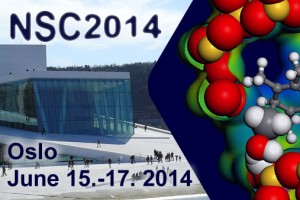
The 5th IUPAC International Conference on Green Chemistry will be taking place August 17–21 2014, in Durban, South Africa.
The main objective of the conference is to emphasize the importance of green chemistry for sustainable development, and to promote novel research and collaborations, by bringing together experts and interested parties from all over the world and from diverse bodies – from the academia to the industry and to governments.
The conference will be a multidisciplinary event considering all the major areas of green chemistry, including green synthesis processes, catalysis, environmentally benign solvents, energy storage, biofuels, green chemistry education, policies, and many other interesting topics. Interfaces with other sciences and other research areas will be actively encouraged. Special attention will also be given to the roles of green chemistry in fast-growing economies and to the promotion of green chemistry in the African continent.
Confirmed plenary speakers include:
- Peter Mahaffy, King’s University College, Canada
- Claudio Mota, Universidade Federal do Rio de Janeiro, Brazil
- Bruno Pollet, University of the Western Cape, South Africa
- Pietro Tundo, Ca’Foscari University, Italy
- Tao Zhang, Institute of Chemical Physics, China
The conference will also feature a special keynote talk and medal presentation to our 2014 Green Chemistry Award winner, Professor Mike North from the University of York.
The conference is being supported by the RSC ‘s Pan Africa Chemistry Network, which aims to help African countries to integrate into regional, national and internation scientific networks. The PACN has awarded a number of bursaries for African scientists to attend this conference. It is also sponsoring a number of plenary speakers.
‘s Pan Africa Chemistry Network, which aims to help African countries to integrate into regional, national and internation scientific networks. The PACN has awarded a number of bursaries for African scientists to attend this conference. It is also sponsoring a number of plenary speakers.
The deadline for registration is June 30 2014.
For more information and to register, please visit the website: www.saci.co.za/greenchem2014
Comments Off on 5th International IUPAC Conference on Green Chemistry
 The asymmetric, enzymatic reduction of ketones has been enhanced with a graphene derived light harvesting photocatalyst. Typically the use of reducing enzymes for specialty chemical synthesis is restricted by the cost of the redox cofactor. In this example the enzyme cofactor is recycled via a rhodium complex. The energy needed to do this is delivered by the chlorophyll mimicking graphene. Enantioselectivity to the resulting alcohols is high, and applicable to both aliphatic and aromatic ketones.
The asymmetric, enzymatic reduction of ketones has been enhanced with a graphene derived light harvesting photocatalyst. Typically the use of reducing enzymes for specialty chemical synthesis is restricted by the cost of the redox cofactor. In this example the enzyme cofactor is recycled via a rhodium complex. The energy needed to do this is delivered by the chlorophyll mimicking graphene. Enantioselectivity to the resulting alcohols is high, and applicable to both aliphatic and aromatic ketones.











 highly cited articles from each of the past 15 years. The result is a growing collection which you can read online
highly cited articles from each of the past 15 years. The result is a growing collection which you can read online 








 ‘s
‘s